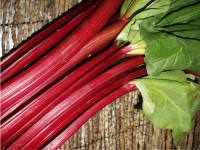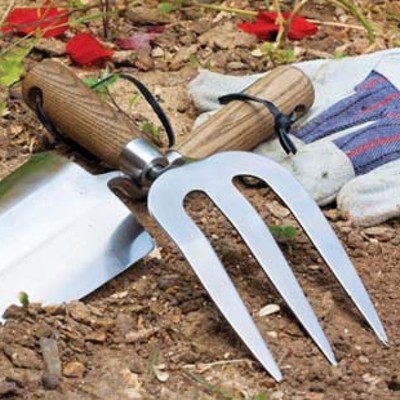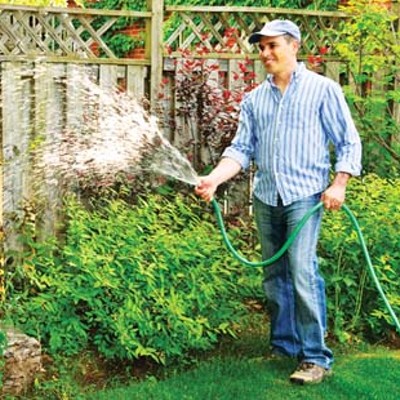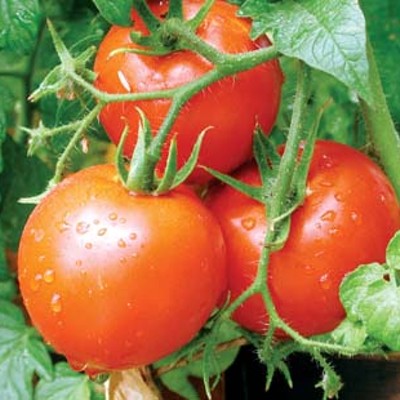My favorite spring vegetables include lettuce, spinach, asparagus, and rhubarb. One of my favorite meals is a grilled pork chop, a fresh garden salad, creamed asparagus, and a slice of warm rhubarb pie with ice cream.
Rhubarb (Rheum rhabarbarum) is a cool-season perennial vegetable with thick red, pink, or green petioles (stalks) and large, extravagant leaves. First cultivated in the Far East for its medicinal qualities, rhubarb was introduced in the United States at the end of the 18th century.
Rhubarb grows best where plants will receive full sun, in fertile, well-drained soils containing good organic matter. Plant rhubarb in the early spring, while plants are dormant. Avoid harvesting stalks the first year, and only harvest lightly for one or two weeks during the second year. Full harvest may begin in the third or fourth year, depending on plant size. Rhubarb may be harvested for eight to 10 weeks.
Rhubarb has a sour, tart, tangy flavor. To minimize the tartness, most people sweeten rhubarb with sugar, honey, or fruit juice.
The flavor depends on the cultivar. Red-stalked reliable cultivars include Canada Red, Cherry Red, Crimson Red, MacDonald, Ruby, and Valentine. Victoria is a reliable green-stalked cultivar. Generally the deeper red the stalk, the more flavorful it will be. Medium-size stalks are generally more tender than large ones.
Harvest 10- to 15-inch stalks by snapping them rather than cutting them off, taking just a third of the stalks from a plant at one time. Immediately after harvesting stalks, cut off and discard the leaves. Never eat rhubarb leaves, which contain oxalic acid, a toxin that can cause poisoning when large quantities of raw or cooked leaves are ingested.
Rhubarb can be stored in a refrigerator for as long as four weeks at 32° to 36°F. For best results, store unwashed stalks in a perforated plastic bag in the crisper drawer of your refrigerator.
One cup of diced rhubarb contains about 26 calories, 2 grams of dietary fiber, and 351 mg of potassium. Because of its acidic nature (pH 3.1), rhubarb should not be cooked in reactive metal pots (aluminum, iron, or copper).
Rhubarb is used in a variety of recipes for such foods as pies, tarts, breads, cobblers, cakes, jams, sauces, and puddings.
Rhubarb Upside-Down Cake
Ingredients
1/2 cup butter or margarine, melted
1 cup brown sugar
4 cups of chopped rhubarb
1 yellow cake mix
Directions
Into a 13 x 9-inch baking pan pour melted margarine; sprinkle
it with brown sugar. Spread chopped rhubarb over the sugar mixture. Prepare
the cake mix in accordance with the directions on the box. Pour the batter over
the rhubarb. Bake at 350°F for 45 minutes or until the cake is done.
For more information on growing and using rhubarb, visit the University of Illinois Extension Horticulture Web site, www.urbanext.uiuc.edu/veggies/rhubarb1.html.
Demonstration-gardens program
University of Illinois Extension Sangamon-Menard master gardeners will be hosting a demonstration of how to plant and care for annual flowers at 6:30 p.m. Tuesday, May 25.
Learn correct planting, mulching, and watering techniques to get your flowering annuals off to a great start. The presentation, which will last 30 to 45 minutes, will followed by a question-and-answer session. The program will be held in the demonstration gardens, located in front of the University of Illinois Extension Building on the Illinois State Fairgrounds.
The program is free and open to the public. For more information, call 217-782-4617.
- Jennifer Fishburn






















